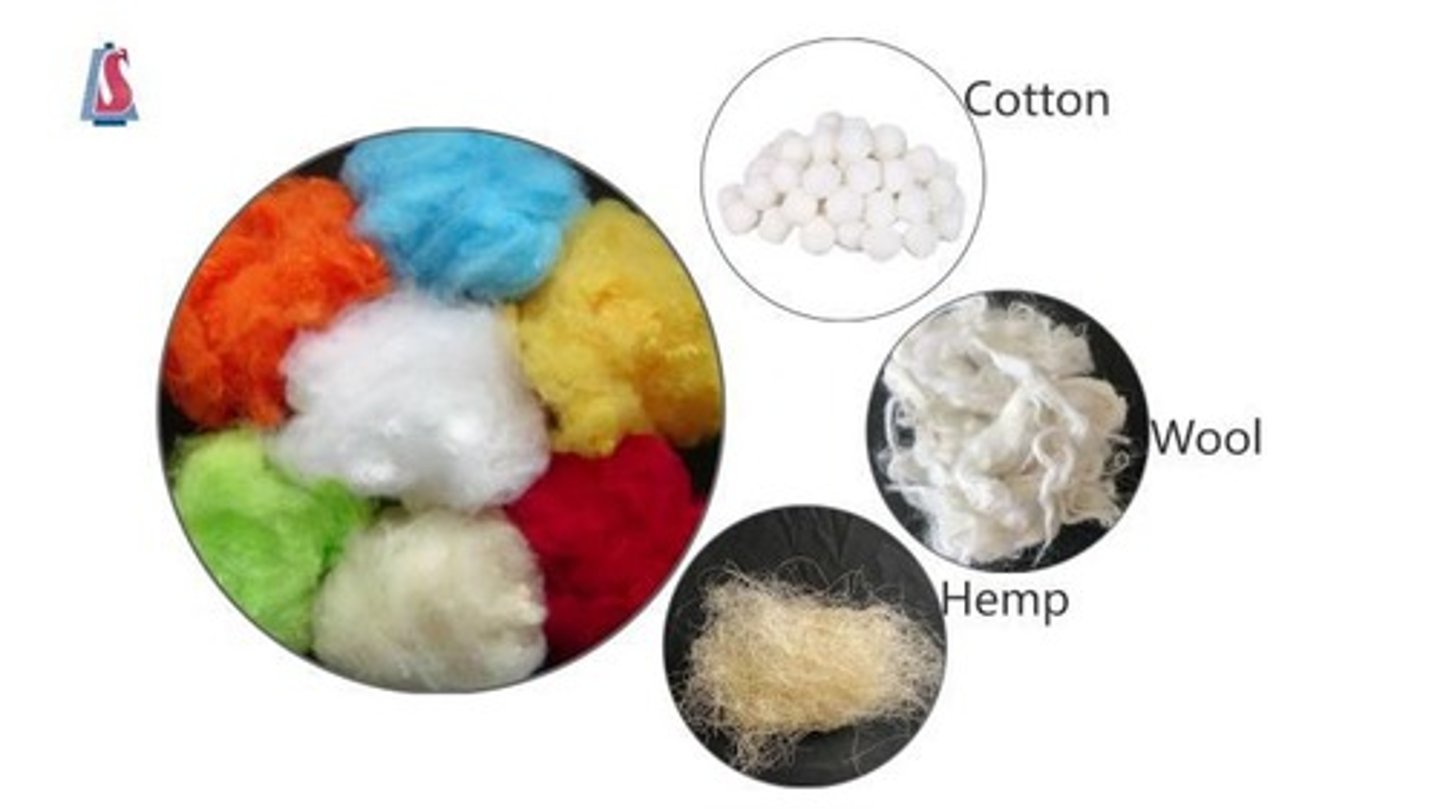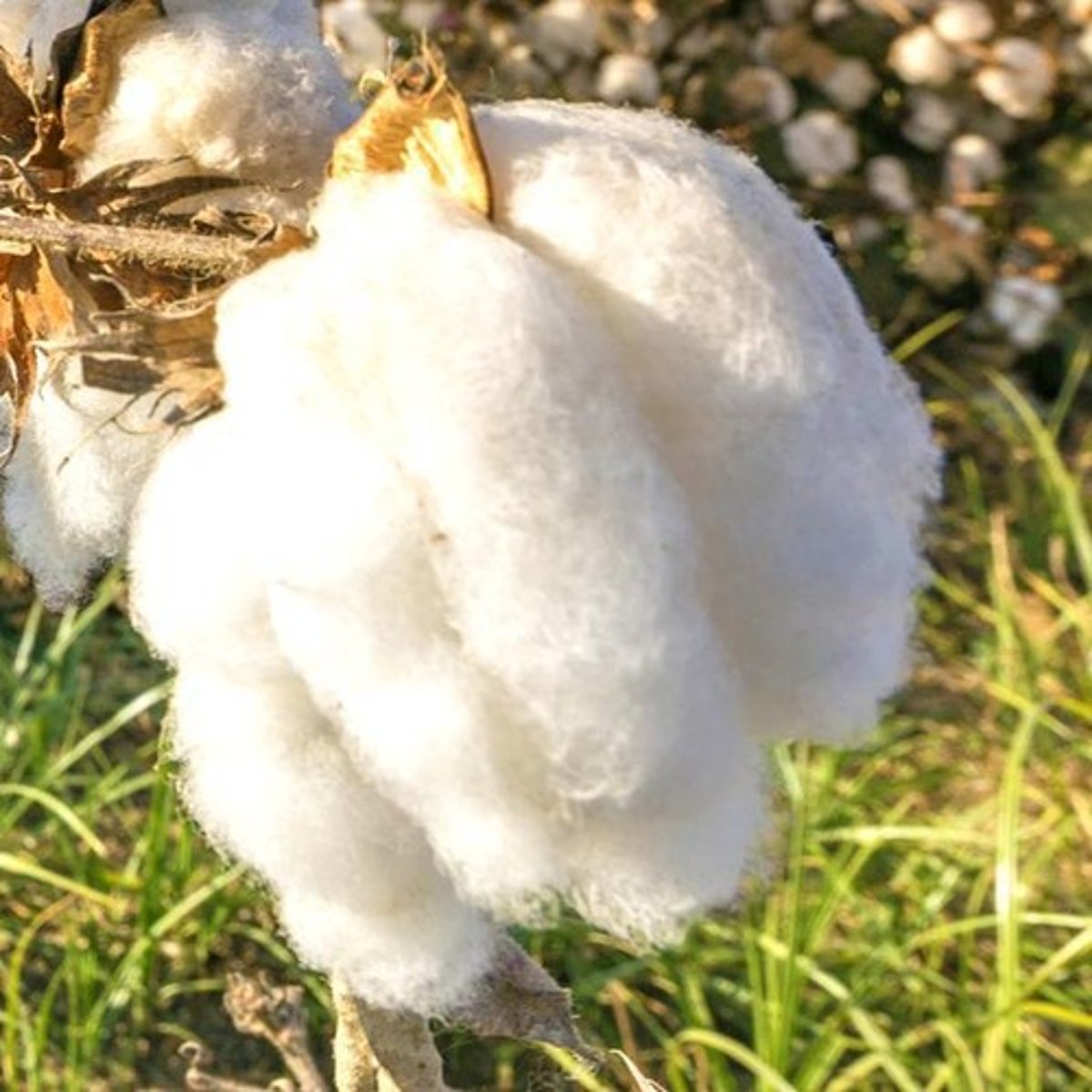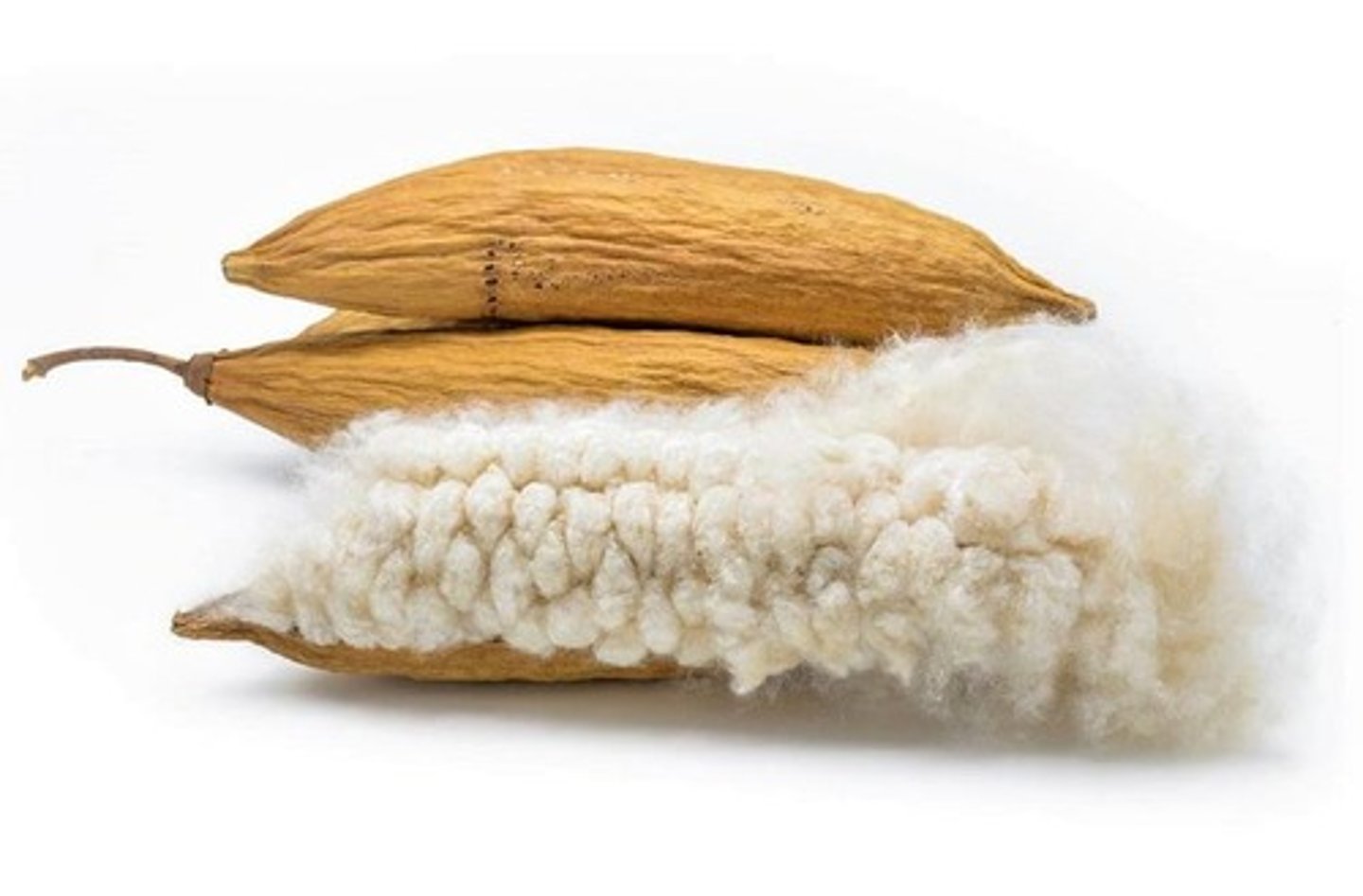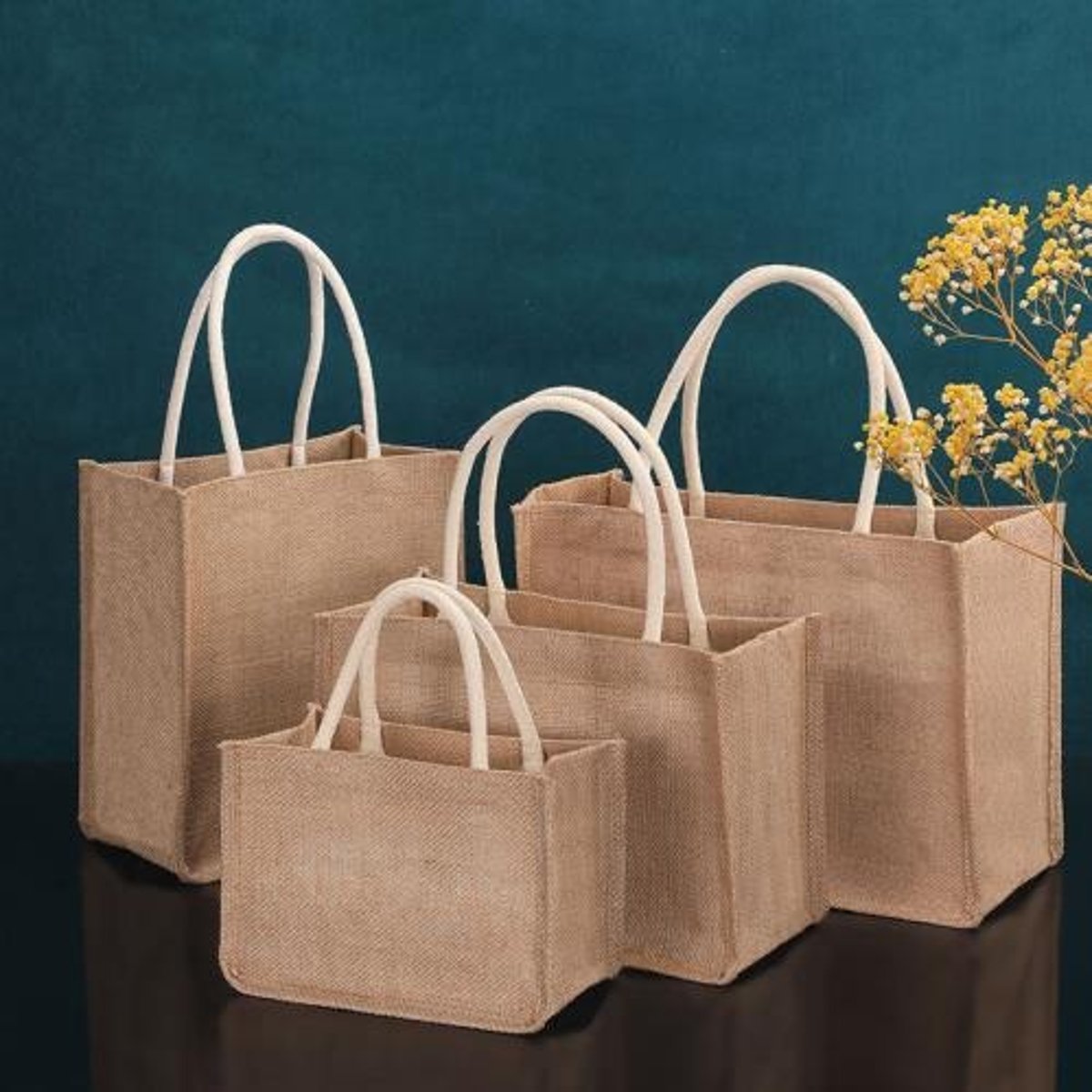Introduction to Textiles: Materials, Types, and Techniques
1/335
There's no tags or description
Looks like no tags are added yet.
Name | Mastery | Learn | Test | Matching | Spaced |
|---|
No study sessions yet.
336 Terms
TEXTILE
any material made of interlacing fibers.
FABRIC
any material made through the various processes such as weaving, knitting, crocheting, or bonding.
CLOTH
refers to a finished piece of fabric that can be used for varying purposes such as a bedcover etc.
FIBER
the basic element of the textile; a fine, hairline like strand that forms the basis of a yarn.
Staple Fibers
short fibers, typically measured in centimeters or inches; all natural fibers except silk are staple fibers.
Filament Fibers
long continuous fibers, usually measured in meters or yards, laid parallel to one another and tightly twisted to produce smooth, strong yarn.
YARN
formed by twisting fibers together to create a continuous strand.
Spun Yarn
composed of staple fibers twisted together.
Filament Yarn
composed of continuous strands made from either a spinneret generated synthetic fiber or from silk.
Natural Fibers
fibers from animal, plant, or mineral sources, produced seasonally and susceptible to the forces of nature.

Synthetic Fibers
fibers that are manufactured and not derived from natural sources.
Blends
combinations of natural and synthetic fibers.
Plant Fibers
fibers derived from plants, such as cotton and flax.

Animal Fibers
fibers derived from animals, such as wool and silk.
Mineral Fibers
fibers derived from mineral sources.
Metal Fibers
fibers made from metal materials.
Cotton
the most widely used plant fiber, a vegetable or cellulosic fiber that comes from the balls of the cotton plant.
Kapok
derived from the seed pod of the Java kapok tree, used as cushioning.

Flax (Linen)
probably the oldest fiber ever woven into fabric, known for its crisp and cool hand.
Shiny Cotton
a processed version of cotton made into cloth that resembles satin.
Egyptian Cotton
extra long staple cotton produced in Egypt, favored for luxury and upmarket brands worldwide.
Linen
which is made from flax, is less soft and absorbent than cotton but more resistant to mildew. It is extremely strong, virtually non-elastic, and tends to be brittle. Linen does not lint and resists fraying and seam slippage. One of the major disadvantages of linen is that it wrinkles and creases readily.
Jute
is a fiber which resembles flax, but is made from the stem and stalk of the jute plant which primarily grows in India. It is very long, and dimensionally stable. It is harsh, brittle, lint's badly, and wrinkles easily, limiting its use primarily to carpet and linoleum backing. It has been woven with aesthetic success into upholstery weight fabrics. Its UV protection, sound and heat insulation, low thermal conduction and anti-static properties make it a wise choice in home décor.

Burlap
is a fabric that is often made from jute. Jute reacts to chemicals similarly to flax and cotton. It has excellent resistance to microorganisms and insects.

Hemp
comes from a plant located in the temperate zone. It is a coarse fiber originally used in ropes and sacks, but is now being used by designers in clothing. Taken from the sterns of the Cannabis Sativa plant which are processed to dissolve the gum or pectin and separate the fibers which are then processed again and woven into yarns and fabric.
Manila Hemp
, also known as Abaca, is derived from the Musa textilis plant. It is mainly grown in the Philippines but is also found, in smaller amounts, in Africa, Malaysia, Indonesia and Costa Rica. The fiber is obtained from the outer layer of the leaf. It is very strong with great luster and is very resistant to damage from salt water.
Ramie
is an inexpensive fiber from an East Asian plant, oftentimes used as a substitute of flax, it can be spun or woven into a fabric. Sometimes called China grass or grass linen, ramie is produced from a perennial shrub. It is an exceptionally strong fiber and has a natural luster comparable to that of silk and an unusual resistance to bacteria and molds. fabrics can resemble fine linen if the fiber is thin, or they can be heavy, like canvas, if the fiber is bulky and coarse.
Natural Rubber
in fiber form dates from the 1920s, when it was discovered that latex (liquid rubber) could be extruded into fiber. Rubber is unique among the natural fibers. It is highly elastic, flexible, and impermeable to water and air. It tends to lose its strength through age and deteriorates in sunlight.
Jusi
is made from banana fibers.
Pina
made from the leaves of the Pineapple plant and is commonly used in the Philippines. It is sometimes combined with silk or polyester to create a fabric. Major use of such is in the creation of the Barong Tagalog and other formal wear.
Wool
fiber is sheared from domesticated animals, primarily sheep. The greatest quantity of textile wool comes from Australia. Fibers vary in length from 1" to 18", depending on where it is obtained. Color varies from pale neutral to dark brown. Known for its exceptional resiliency and elasticity, it is an excellent fiber for use in carpets. Wool carpet remains the standard by which synthetic fiber carpets are judged. Since its flexibility is also very good, wool can be reshaped by steaming or pressing. Wool burns slowly and is self-extinguishing; it stops burning when the flame source is removed, thus cigarette burns are quickly extinguished with minimal noticeable damage.
Hair
comes from camel, goat, mohair, alpaca, llama, the vicuna (the rarest) and horsehair.
Cashmere
is taken from the lowly Kashmiri Goat. It is said to be the fiber of Kings, and is so luxurious that the Arc of the Covenant of the Old Testament was said to be lined with it.
Pashmina
is the current buzzword of the fashion industry. It is the finest 'wool' shorn from the undercoat of Himalayan Mountain Goats.
Silk Fibers
are considered the most beautiful of all fibers due to its marvelous, natural luster. This fiber comes from the cocoons of the silkworm. Sericulture is the growth of silk moths for their silk production. The process is quite labor-intensive, which accounts for the expense of the fiber.
Liquid silk
Excreted from the head of the silkworm to form a cocoon around its body.
Cocoon
Formed by liquid silk around the silkworm's body, dried in an oven to kill the pupae inside.
Silk filament
Average length of each filament is about 600 yards; extremely fine yet strong in relation to its size.
Strongest natural fiber
Silk is the strongest natural fiber, surpassed only by nylon in strength.
Organzine or Thrown silk
The finest cultured silk yarn made from the longest filaments.
Tram, Spunsilk or Bourette
Uses shorter strands (or broken strands) and has less luster and sheen.
Tussah
Silk fabric woven from silk made by wild, uncultivated silkworms; naturally tan, cannot be bleached, and has a rougher texture.
Duppion/Dupioni
Silk from two silkworms that spun their cocoons together, resulting in uneven, irregular yarn larger than regular filaments.
Thai Silk
Produced from the cocoons of Thai silkworms; considered one of the finest fabrics with unique patterns and colors.
Silk properties
More wrinkle resistant than natural cellulosic fibers, fragile, discolors in strong light, deteriorates from bleaches and cleaning acids.
Hiking
Condition where silk swells when damp and shrinks when dry.
Asbestos
A mineral with fluffy strands, fireproof, used in textiles, but exposure is linked to serious diseases.
Rayon
The first synthetic fiber derived from plant stalks, resembling silk or linen, and frequently blended with cotton or wool.
Viscose Rayon
A type of rayon that blends well with other fibers, is absorbent, dyes readily, and has reasonable light and abrasion resistance.
Low resiliency
A characteristic of rayon that causes it to wrinkle easily.
Mildew and rot
Rayon is subject to these under prolonged exposure to sunlight.
Acetate
Compound of cellulose acetate (derivative of cellulose) developed by the Celanese Corp in 1924. Generally heat-treated against wrinkling, is washable, fast-drying, and does not shrink. Acetate fibers are flexible, resulting in fabric with excellent draping qualities. However, it needs special dyes. It has a luxurious hand, and woven unto expensive textiles such as satins, failles, crepes, brocades and damasks. This is a thermoplastic fiber, easily damaged by heat and easily wrinkled.
Tri-Acetate
Almost pure cellulose acetate developed by the Celanese Corp. in 1954. This has good resiliency as a fiber as compared with Acetate. Triacetate is processed differently than acetate, resulting in a fiber of greater stability and abrasion resistance. It can be heat treated to prevent the heat sensitivity inherent to acetate. This is shrink resistant, and maintains a crisp finish, thus, permanent pleats can be set in triacetate. It is used for textured knits and tricots.
Nylon
Developed by E.l. Dupont de Nemours and Co. in 1939. Requires elements of petroleum, natural gas (carbon), air (nitrogen and oxygen), and water (hydrogen). It produces long chain molecules which are spun and stretched after cooling. Strongest of all fibers, it is highly elastic with good elongation and recovery properties. Its great strength, high resiliency, and good abrasion resistance makes it the most popular carpet fiber. It does not absorb oil and most air-borne dirt, is easily dyed and is washable. It is also known to repel fungus, mildew and mold, and is dimensionally stable. This fiber deteriorates when exposed to sunlight.
Acrylic
Developed by the DuPont Co. in 1950 under the trade name Orion, it is derived from elements of coal, air, water, petroleum and limestone. It uses staple fibers which are crimped before cutting and then mechanically bulked for an insulative, fluffy, wool-like effect. is resistant to sunlight, and oil-borne and air-borne dirt. It is durable, abrasion-resistant, mildew and moth-proof. It is exceptionally light, providing bulk without weight, generally knitted into pile fabrics such as fake furs, otherwise blended with other fibers such as polyester or nylon. fibers accept dyes well, providing a good selection of colors.
Modacrylic
Developed by the Union Carbide in 1949. It is derived from elements of natural gas, coal, air, and salt and water. Fibers easily dyed- are washable and are drip-dry. Resistant to acids and alkalis. Flame-resistant used for draperies and casement cloths.
Olefins
Developed by the Hercules Inc. in 1961 from a byproduct of petroleum. Olefin is relatively inexpensive and very popular for use as a carpet fiber. Because of its outstanding resistance to stains and crushing and its lack of static generation, olefin continues to increase in popularity as a carpet fiber. Today, the most widely used olefin fiber is polypropylene. Polyethylene was the first olefin fiber to reach commercial importance, being used as upholstery for airplane seats for many years. Olefin fibers in upholstery textiles are strong, light in weight and generally bulked. It does not absorb moisture or air-borne dirt; it is also resistant to mildew, rot, moths and vermin. Olefin is one of the lightest synthetic fibers and has excellent elastic recovery.
Polypropylene
The most widely used olefin fiber, developed from a byproduct of petroleum. It is strong, light in weight and generally bulked.
Polyethylene
The first olefin fiber to reach commercial importance, used as upholstery for airplane seats for many years.
Polyester
The initial research by Du Pont that led to the discovery of nylon also led to the invention of polyester in 1953. Among its many characteristics are its resistance to air-borne and oil-borne dirt, low moisture absorbency: wrinkle resistance, high strength and resiliency, abrasion resistance, stability. Washable and drip-dry, it also has excellent crease resistance and is easy to maintain. Polyester is frequently blended with other fibers to enhance their performance. Hospital cubicle curtains are often made of polyester.
Dacron
A popular trade name for different types of polyester.
Fortrel
A popular trade name for different types of polyester.
Kodel
A popular trade name for different types of polyester.
Trevira
A popular trade name for different types of polyester.
Glass Fiber
A fiber produced from glass that is inherently resistant to flame, strong, does not absorb moisture, has low abrasion resistance, and dyes well.
Fiberglas
Owens-Corning's trade name for its glass fiber product.
Polynude Nylon
A chemical fiber similar to nylon that outperforms existing synthetics in washability, wrinkle resistance, and ease of care, and does not shrink.
Saran
A fiber used for outdoor furniture upholstery and screening, unaffected by sunlight, easy-to-care, wrinkle resistant, and abrasion resistant, often blended with rayon and modacrylic.
Spandex
A manufactured elastomeric fiber that can be stretched over 500% without breaking and recovers to its original length, allowing for stretch fabrics without altering hand or appearance.
Aramids
Synthetic fibers that are resistant to acids and solvents, marketed under the trade names Nomex and Kevlar, with Nomex used in high-temperature-resistant apparel and Kevlar used in bullet-resistant vests.
Nomex
A high temperature-resistant fiber used mostly in apparel such as firefighters' clothing and space suits.
Kevlar
A high-temperature-resistant fiber that is stronger than comparably sized steel, used as a barrier fabric in seating and in bullet-resistant vests.
Felting
The matting together of fibers to form a web by moisture, pressure, and heat, resulting in a fabric with no grain or direction that can be cut, sewn, and draped without hemming.
Film
A fabric produced originally in sheet forms through extrusion, forming in molds, or rolling between rollers.
Knitting
A method of fabric formation that utilizes machinery with blunt rods or needles to form a single continuous yarn into interlocking loops, consisting of vertical rows of stitches called WALES and horizontal rows called COURSES.
Wales
Vertical rows of stitches in knitting.
Courses
Horizontal rows of stitches in knitting.
History of Knitting
The art of knitting was perfected in the 15th century, with the oldest known knitted fabric being a pair of heavy, hand-knitted wool socks discovered in an Egyptian tomb dating from about the 4th century B.C.
15th century
The period when the art of knitting was perfected and spread throughout Europe.
Knitting needles
Originally carved from bone or wood, these generated only coarse meshes and uneven fabric.
Steel needles
Improvement made by the Spanish to knitting needles, allowing for finer knitting.
Reverend William Lee
The Englishman who constructed the first knitting machine.
First knitting machine
Produced eight loops to one inch of width, which was too coarse.
Loops per inch
The first knitting machine produced eight loops, later improved to twenty loops, and modern machines average twenty-eight loops.
Oldest known knitted fabric
A pair of heavy, hand-knitted wool socks discovered in an Egyptian tomb, dating from about the 4th century B.C.
Cnytton
The Old English word for knitting found in literature from the year 1492.
Braiding
The interweaving or intertwining of three or more strands of yarn or other material.
Braid construction
May produce flat, narrow tapes or strips as well as center-cored rounds or hollow tubes.
Straws
Fabrics made by braiding natural plant fibers.
Baku
A fine, lightweight, expensive straw with a dull finish.
Balibuntal
A fine, lightweight, glossy straw obtained from unopened palm leaf stems.
Leghorn
A fine, braided straw made from special wheat grown in Tuscany that has been cut, bleached, and worked by hand.
Milan
A fine, closely braided straw.
Panama
A fine, hand-braided, creamy colored Toquilla straw made primarily in Ecuador.
Tuscan
A fine, yellow straw woven from the tops of bleached wheat stalks grown in Tuscany.
Twisting
Intertwining and sometimes knotting of yarns that run in two or more directions.
Macrame
A method used to make knotted textiles.
Nets
Textiles made using the twisting method.
Laces
Textiles made using the twisting method.
Weaving
The interlacing of warp (lengthwise) and filling or weft (crosswise) yarns, usually at right angles.